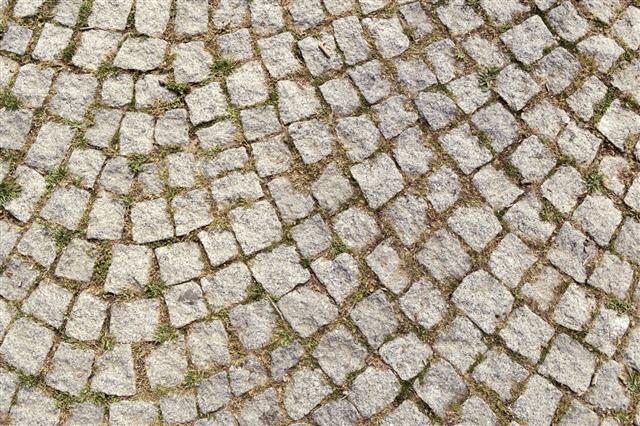
Ashlar masonry pertains to finely cut rock, or the masonry using fine stonework usually with squared and cuboid structures. Here is more on this masonic art with some examples of architecture, built using ashlar masonry.
Rubble Masonry
Individual stones, in which adjoining sides need not be right-angled to each other as in ashlar.
While visiting different places as a tourist, what all appeals to us? There are a lot of things, like local food, attire, folk art, language, weather, etc. Sometimes, we specifically remember some places we visit, or some lanes, or some corners on the streets of a city. How much do the buildings or monuments of a region attract us?
Architecture is both, an art and science. Besides the beauty that appeals to our eyes, what else goes in to making of all the magnificent structures around the world is a matter of detailed study. However, the art of masonry, applied in the building of walls, is very crucial to any structure. Ashlar is one such type of masonry. Let’s get to know about its form and types, besides checking out some architectural examples.
Definition of Ashlar Masonry
Finely-cut and dressed stones, or the masonry using these stones, is known as ashlar masonry. The adjoining sides of ashlar stones are at right angles to each other.
Ashlar stones are rectangular, cuboid blocks. Generally, these are stones of uniform height. The joints between them are very thin, regular, and with uniform thickness. The bed joints in all ashlar patterns are horizontal and straight; the vertical joints being plumb, or similar to the perpendicular line of joints. Individual units of stones are worked upon their adjoining sides, specifically to be able to place them evenly in a horizontal layer or series. Thus, the faces of the stones could be left a little uneven occasionally, but not the sides.
The term ‘ashlar’ applies either to the precisely edged stones, or the masonry technique using such stones. In masonry, separate units like bricks or stones are laid together using mortar. In ashlar masonry, the mortar binding the stones is least visible. It is an expensive form of masonry, as it requires neat and detailed dressing of the stones. Ashlar can turn a construction into a finesse.
Different Types of Ashlar Masonry
Depending on the arrangement of the stones, ashlar masonry in categorized into various types. Factors like laying of the stones in regular courses with continuous joints, or in broken courses, the height and length of the stones in the layer, etc., define these types.
Coursed Ashlar
Stone blocks are of uniform size throughout. Bed joints are continuous. The vertical joints in the wall are alternating, as the stones are laid in a way to cover the joints from the lower layer. And as we know, alternate placement strengthens the wall. The height of two courses is sometimes kept different.
Random Ashlar
Stone blocks are of varying height and length. Also, their arrangement has no specific rule. It has a general course of alignment, however, the vertical joints need not be one over the other. Although it looks very random, it has an in-built harmony. The variations in height and length have to be in proportion to the overall structure, for strong bonding, and thus, the positioning has to be mindfully crafted.
Block-in Ashlar
Stone blocks have the same height but different lengths. The ratio between the length and the height of the stone is around 3:1, although this may vary. While employing the block-in type, the rock-faced finish is chosen for the facade, as it looks the best for this type of ashlar.
Broken Ashlar
In broken ashlar, a particular course is not followed. The horizontal joint does not exceed four feet. The stones are of dissimilar sizes, but still have their apt positions. It is left natural, showcasing the rock-faced texture, or at times dressed with tools.
Architecture in Ashlar Masonry
Different colors ranging from white limestone, honey, and reddish tint of sandstone are used in the ashlar pattern on these walls.
Machu Picchu, Peru
The ‘dry stone walls’ technique is known for its peculiarity of constructing stone walls without binding the stones within with mortar. This Inca site of Machu Picchu has such dry stone walls.
Trapezoidal windows built in the wall are seen here. The Incas were believed to be masters of ashlar masonry.
Pyramid of Menkaure, Cairo
This is the smallest of the triad of pyramids located on the Giza plateau, on the southwestern outskirts of Cairo in Egypt. It is built from granite and limestone. The mortuary temple complex was constructed using ashlar granite.
These granite ashlars, weighing approximately 30 tons, were specially imported from Aswan in southern Egypt.
Royal Tombs, Mycenae, Greece
This image depicts the tholos tombs from the Bronze Age (around 1250 BC). They are located in southwest Athens in Peloponnese.
Ashlar masonry was used in the building of the so-called ‘beehive’ dome (named after the structure resembling a beehive).
Hard rocks are the perfect kind for shaping into ashlar stones. Since the rock has to be heavily chiseled, a soft rock cannot be used due to the risk of fractures. Thus, rocks like granite, bluestone, and sandstone are used in ashlar masonry.

















